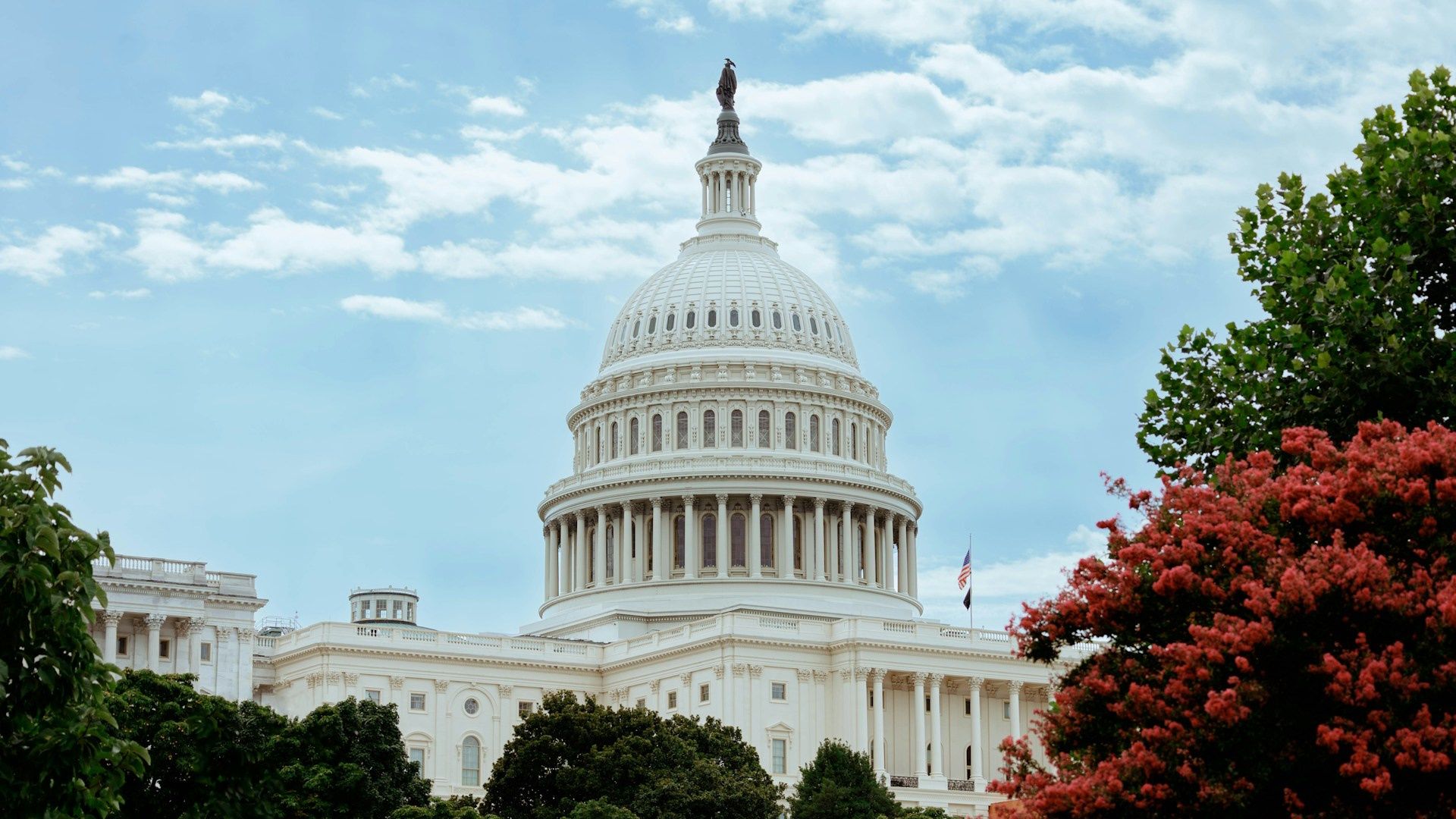Uncategorized
A Blueprint for Crypto Market Structure

The digital asset industry stands at a critical, hopeful juncture.
After years of fragmented approaches to regulation and legislation, we’ve reached a moment where clarity is both urgent and achievable. Blockchain Association’s consensus-driven market structure principles, which represent the perspective of the leading companies in the industry, offer a framework for the path forward. The market structure principles that emerged from this collaborative effort reflect the maturation of the industry and the focus required to enact meaningful legislation and achieve smart regulation.
The principles tackle twelve key areas – at their core is a recognition that consumer protection and innovation are complementary, not competing, priorities. We call for standardized disclosures and robust safeguards while ensuring businesses can innovate without undue burden. This balanced approach extends to custody, where we advocate protecting individuals’ right to self-custody their assets while establishing clear frameworks for institutional custody solutions.
A crucial element of our framework is the distinction between financial activities and other, varied applications of blockchain technology. Smart regulation must focus on genuine financial risks without stifling innovation in non-financial uses of this technology. This extends to the treatment of non-custodial software, services, and smart contracts, which shouldn’t face the same regulatory requirements as traditional financial intermediaries when they don’t custody user assets.
The principles also address one of the industry’s most pressing challenges: token classification. We need clear frameworks for distinguishing between securities, commodities, and other digital assets. This clarity is essential for compliance and growth, particularly as the market matures and new types of tokens emerge.
Our framework recognizes the global nature of digital assets while emphasizing and strengthening U.S. competitiveness. We advocate for reducing friction in cross-border transactions while ensuring U.S. markets remain attractive for investment and innovation. This includes establishing a single secondary trading market to enhance liquidity and price discovery.
Developer protections form another crucial pillar of Blockchain Association’s principles. Open-source software developers shouldn’t face liability when independent actors misuse their code. This protection is essential for maintaining the innovation that drives our industry forward. Similarly, we emphasize the importance of network participation — protecting the ability of individuals and institutions to engage in activities like staking, voting, and peer-to-peer transactions on permissionless networks.
This consensus we’ve achieved on these principles matters because it signals to Congress and regulators that the industry is and has been ready for common sense regulation. We’re not asking for special treatment or regulatory carve-outs. Instead, we’re proposing clear rules of the road that protect consumers, foster innovation, and ensure U.S. competitiveness in a rapidly evolving global market.
But this window of opportunity won’t remain open indefinitely. Market developments, election cycles, and global competition create urgency for action. The industry has demonstrated its readiness to engage constructively with policymakers. We’ve shown that we can find common ground on complex issues and that we’re committed to responsible innovation.
For our Congressional allies, regulators in Washington D.C., and those newly engaging with these issues, these principles demonstrate that the industry is ready for serious policy discussion. For industry participants, they represent a shared vision of responsible market structure. For everyone involved, they offer a path forward at a crucial moment for the future of digital assets in the United States.
The work of enacting smart regulations and drafting and passing legislation remains ahead. But with clear principles, industry alignment, and growing policy sophistication on both sides, we have an unprecedented opportunity to get this right. We have precious few months to get this done, let’s not let this moment pass.
Uncategorized
What’s Next for Bitcoin and Ether as Downside Fears Ease Ahead of Fed Rate Cut?

Fears of a downside for bitcoin (BTC) and ether (ETH) have eased substantially, according to the latest options market data. However, the pace of the next upward move in these cryptocurrencies will largely hinge on the magnitude of the anticipated Fed rate cut scheduled for Sept. 17.
BTC’s seven-day call/put skew, which measures how implied volatility is distributed across calls versus puts expiring in a week, has recovered to nearly zero from the bearish 4% a week ago, according to data source Amberdata.
The 30- and 60-day option skews, though still slightly negative, have rebounded from last week’s lows, signaling a notable easing of downside fears. Ether’s options skew is exhibiting a similar pattern at the time of writing.
The skew shows the market’s directional bias, or the extent to which traders are more concerned about prices rising or falling. A positive skew suggests a bias towards calls or bullish option plays, while a negative reading indicates relatively higher demand for put options or downside protection.
The reset in options comes as bitcoin and ether prices see a renewed upswing in the lead-up to Wednesday’s Fed rate decision, where the central bank is widely expected to cut rates and lay the groundwork for additional easing over the coming months. BTC has gained over 4% to over $116,000 in seven days, with ether rising nearly 8% to $4,650, according to CoinDesk data.
What happens next largely depends on the size of the impending Fed rate cut. According to CME’s Fed funds futures, traders have priced in over 90% probability that the central bank will cut rates by 25 basis points (bps) to 4%-4.25%. But there is also a slight possibility of a jumbo 50 bps move.
BTC could go berserk in case the Fed delivers the surprise 50 bps move.
«A surprise 50 bps rate cut would be a massive +gamma BUY signal for ETH, SOL and BTC,» Greg Magadini, director of derivatives at Amberdata, said in an email. «Gold will go absolutely nuts as well.»
Note that the Deribit-listed SOL options already exhibit a strong bullish sentiment, with calls trading at 4-5 volatility premium to puts.
Magadini explained that if the decision comes in line with expectations for a 25 bps cut, then a continued calm «grind higher» for BTC looks likely. ETH, meanwhile, may take another week or so to retest all-time highs and convincingly trade above $5,000, he added.
Uncategorized
Asia Morning Briefing: Native Markets Wins Right to Issue USDH After Validator Vote

Good Morning, Asia. Here’s what’s making news in the markets:
Welcome to Asia Morning Briefing, a daily summary of top stories during U.S. hours and an overview of market moves and analysis. For a detailed overview of U.S. markets, see CoinDesk’s Crypto Daybook Americas.
Hyperliquid’s validator community has chosen Native Markets to issue USDH, ending a weeklong contest that drew proposals from Paxos, Frax, Sky (ex-MakerDAO), Agora, and others.
Native Markets, co-founded by former Uniswap Labs president MC Lader, researcher Anish Agnihotri, and early Hyperliquid backer Max Fiege, said it will begin rolling out USDH “within days,” according to a post by Fiege on X.
According to onchain trackers, Native Markets’ proposal took approximately 70% of validators’ votes, while Paxos took 20%, and Ethena came in at 3.2%.
The staged launch starts with capped mints and redemptions, followed by a USDH/USDC spot pair before caps are lifted.
USDH is designed to challenge Circle’s USDC, which currently dominates Hyperliquid with nearly $6 billion in deposits, or about 7.5% of its supply. USDC and other stablecoins will remain supported if they meet liquidity and HYPE staking requirements.
Most rival bidders had promised to channel stablecoin yields back to the ecosystem with Paxos via HYPE buybacks, Frax through direct user yield, and Sky with a 4.85% savings rate plus a $25 million “Genesis Star” project.
Native Markets’ pitch instead stressed credibility, trading experience, and validator alignment.
Market Movement
BTC: BTC has recently reclaimed the $115,000 level, helped by inflows into ETFs, easing U.S. inflation data, and growing expectations for interest rate cuts. Also, technical momentum is picking up, though resistance sits around $116,000, according to CoinDesk’s market insights bot.
ETH: ETH is trading above $4600. The price is being buoyed by strong ETF inflows.
Gold: Gold continues to trade near record highs as traders eye dollar weakness on expected Fed rate cuts.
Elsewhere in Crypto:
Uncategorized
BitMEX Co-Founder Arthur Hayes Sees Money Printing Extending Crypto Cycle Well Into 2026

Arthur Hayes believes the current crypto bull market has further to run, supported by global monetary trends he sees as only in their early stages.
Speaking in a recent interview with Kyle Chassé, a longtime bitcoin and Web3 entrepreneur, the BitMEX co-founder and current Maelstrom CIO argued that governments around the world are far from finished with aggressive monetary expansion.
He pointed to U.S. politics in particular, saying that President Donald Trump’s second term has not yet fully unleashed the spending programs that could arrive from mid-2026 onward. Hayes suggested that if expectations for money printing become extreme, he may consider taking partial profits, but for now he sees investors underestimating the scale of liquidity that could flow into equities and crypto.
Hayes tied his outlook to broader geopolitical shifts, including what he described as the erosion of a unipolar world order. In his view, such periods of instability tend to push policymakers toward fiscal stimulus and central bank easing as tools to keep citizens and markets calm.
He also raised the possibility of strains within Europe — even hinting that a French default could destabilize the euro — as another factor likely to accelerate global printing presses. While he acknowledged these policies eventually risk ending badly, he argued that the blow-off top of the cycle is still ahead.
Turning to bitcoin, Hayes pushed back on concerns that the asset has stalled after reaching a record $124,000 in mid-August.
He contrasted its performance with other asset classes, noting that while U.S. stocks are higher in dollar terms, they have not fully recovered relative to gold since the 2008 financial crisis. Hayes pointed out that real estate also lags when measured against gold, and only a handful of U.S. technology giants have consistently outperformed.
When measured against bitcoin, however, he believes all traditional benchmarks appear weak.
Hayes’ message was that bitcoin’s dominance becomes even clearer once assets are viewed through the lens of currency debasement.
For those frustrated that bitcoin is not posting fresh highs every week, Hayes suggested that expectations are misplaced.
In his telling, investors from the traditional world and those in crypto actually share the same premise: governments and central banks will print money whenever growth falters. Hayes says traditional finance tends to express this view by buying bonds on leverage, while crypto investors hold bitcoin as the “faster horse.”
His conclusion is that patience is essential. Hayes argued that the real edge of holding bitcoin comes from years of compounding outperformance rather than short-term speculation.
Coupled with what he sees as an inevitable wave of money creation through the rest of the decade, he believes the present crypto cycle could stretch well into 2026, far from exhausted.
-

 Business11 месяцев ago
Business11 месяцев ago3 Ways to make your business presentation more relatable
-

 Fashion11 месяцев ago
Fashion11 месяцев agoAccording to Dior Couture, this taboo fashion accessory is back
-

 Entertainment11 месяцев ago
Entertainment11 месяцев ago10 Artists who retired from music and made a comeback
-

 Entertainment11 месяцев ago
Entertainment11 месяцев ago\’Better Call Saul\’ has been renewed for a fourth season
-

 Entertainment11 месяцев ago
Entertainment11 месяцев agoNew Season 8 Walking Dead trailer flashes forward in time
-

 Business11 месяцев ago
Business11 месяцев ago15 Habits that could be hurting your business relationships
-

 Entertainment11 месяцев ago
Entertainment11 месяцев agoMeet Superman\’s grandfather in new trailer for Krypton
-

 Entertainment11 месяцев ago
Entertainment11 месяцев agoDisney\’s live-action Aladdin finally finds its stars





